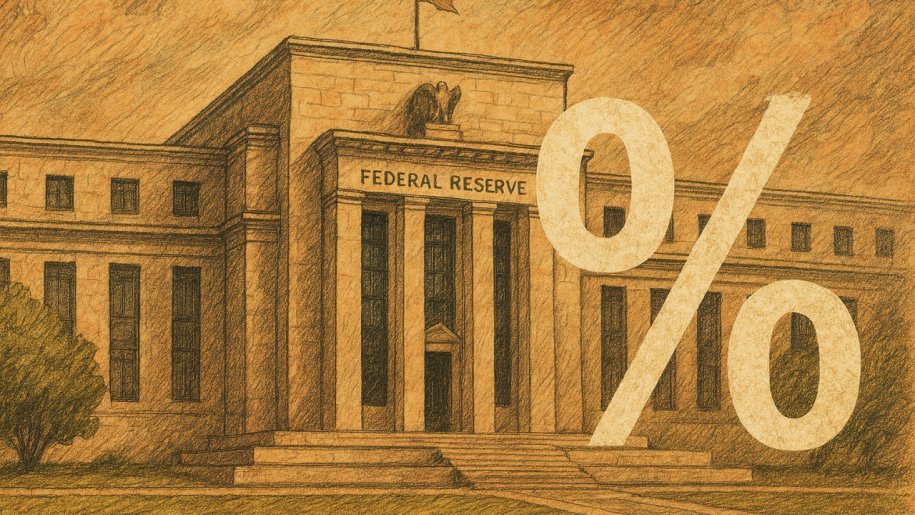
The U.S. Federal Reserve has officially lowered interest rates by 25 basis points, marking a significant policy pivot aimed at supporting a slowing economy without reigniting inflation. The target range for the federal funds rate now stands at 3.75% to 4%, following the Committee’s decision on October 29.
In its accompanying statement , the Fed said economic activity continues to expand at a “moderate pace,” although job growth has slowed and unemployment has edged higher in recent months. Inflation , while still elevated, has shown signs of gradual moderation since earlier this year.
The central bank reaffirmed its long-term 2% inflation goal and reiterated its dual mandate to achieve both price stability and maximum employment. “Downside risks to employment have risen,” the statement noted, reflecting growing concerns that tighter financial conditions could start to weigh more heavily on the labor market.
A Divided Committee Reflects Uncertain Outlook
The decision was not unanimous. Two members dissented – Stephen Miran, who pushed for a deeper 50-basis-point cut, and Jeffrey Schmid, who preferred to keep the rate unchanged. The split highlights the Fed’s internal tension between curbing inflation and cushioning the economy against further slowdown.
In addition to the rate cut, the Fed confirmed it will end the reduction of its securities holdings by December 1, signaling a pause in its balance sheet tightening. That step effectively slows the pace of quantitative tightening, potentially injecting more liquidity into financial markets at a time when borrowing conditions remain tight.
Policymakers emphasized a data-dependent approach going forward, saying future rate moves would depend on “incoming economic data, the evolving outlook, and balance of risks.”
Market Reaction: Crypto Steadies After Brief Volatility
Following the announcement, traditional markets saw a muted but steady reaction, while digital assets fluctuated briefly before stabilizing.
Bitcoin traded around $111,783, gaining 0.56% in the last hour but still down nearly 3% over 24 hours, while Ethereum hovered near $4,004, showing similar patterns of short-term recovery amid broader caution.
Analysts noted that the subdued response reflects traders’ mixed expectations. While rate cuts typically fuel risk appetite and support speculative assets like cryptocurrencies, uncertainty over how many more cuts could follow is keeping markets restrained.
How Will the Crypto Market React Next?
The Fed’s decision could have far-reaching implications for the crypto market’s momentum heading into November. Historically, periods of monetary easing have benefited Bitcoin and other digital assets by reducing yields on traditional instruments and increasing demand for alternative stores of value.
If the Fed signals a more dovish tone in the coming weeks—particularly if Powell hints at the possibility of another rate cut in December—investors could interpret it as a green light for renewed risk-taking. In that scenario, Bitcoin could push toward resistance near $115,000, while Ethereum may attempt to reclaim the $4,200–$4,300 range.
On the other hand, a more cautious or data-dependent message from the Fed chair could cap gains in the short term, keeping Bitcoin in a consolidation phase around $110,000–$113,000.
Liquidity and Sentiment Are Key Drivers
The crypto market’s next big move will likely depend on liquidity conditions across global markets. The Fed’s decision to halt balance sheet reductions could restore confidence among institutional investors, especially those sensitive to capital availability.
As liquidity improves and yields fall, capital tends to rotate toward higher-risk assets, including cryptocurrencies. This could strengthen the bullish narrative heading into year-end, particularly if inflation continues to cool and economic data remains stable.
Meanwhile, the Ethereum network and other major altcoins could benefit from renewed inflows if macro uncertainty fades, especially given recent improvements in network efficiency and rising institutional interest in tokenized assets.
A Turning Point for Risk Assets
Overall, the Fed’s latest move signals that monetary policy is entering a new phase, one focused on preventing economic weakness rather than fighting inflation at all costs. For crypto investors, this represents a potential inflection point—the beginning of an environment where risk assets might outperform again, provided inflation stays under control.
Still, with the next Fed meeting just weeks away and U.S. labor data set for release soon, volatility remains a constant factor. Traders across both traditional and digital markets are now waiting for Chair Jerome Powell’s comments for further guidance on how far the central bank is willing to go to support growth.



